Re-Framing 95: Preview & Tour
Join Untapped New York's Chief Experience Officer Justin Rivers and Artist-in-Residence Aaron Asis for a one of a kind activation weekend!


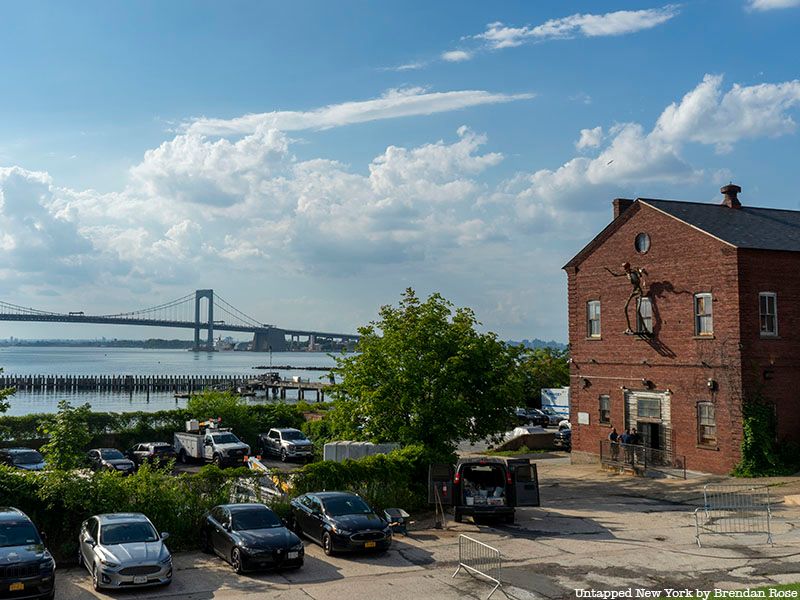
Bayside, Queens, is a neighborhood a few miles from the Queens-Nassau County border flanked by Whitestone and Douglaston. The neighborhood is centered around Bell Boulevard, known for its wide variety of culinary options and stores. The area, which was considered rural until around the turn of the century, attracted many movie stars in the 1920s and 1930s and boomed around the end of World War II. The neighborhood provides access to Little Neck Bay, with views of the Throgs Neck Bridge, and has retained much of its history over the years, including at its storied federal military base, Fort Totten. From the oldest living organism in New York City to a scandalous murder, here are the top 10 secrets of Bayside.
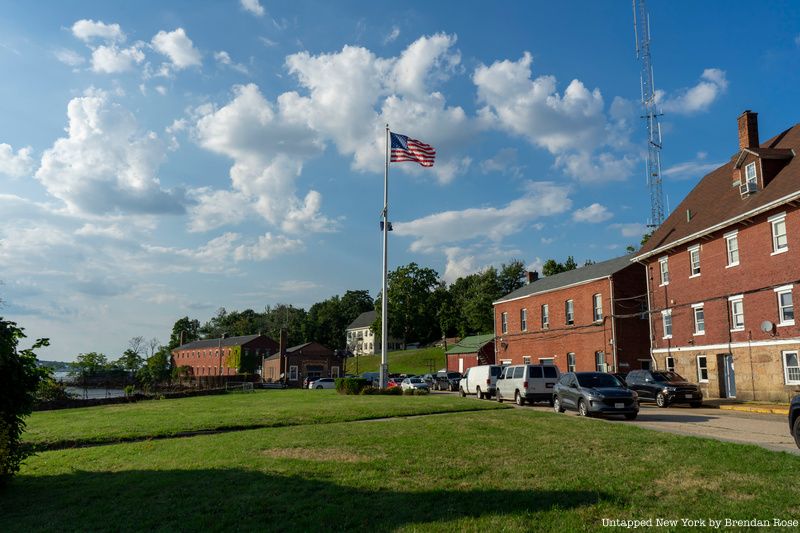
From the Civil War through the 1980s, around 100 acres of land on Bayside’s Willets Peninsula was used as a federal military base known as Fort Totten, which was originally constructed to defend an eastern approach to New York Harbor by the Confederates. Fort Totten became obsolete as a defensive structure over the years, mainly used for casualty support and hospital care. Though, a myth has circulated for years that there is an escape passage between Fort Totten and Fort Schuyler in the Bronx, which is actually partly based on facts. At Fort Schuyler, there is a corridor that appears to go deeper underground, which is now impassable but may have been used 150 years ago. The tunnel most likely leads to a dead end, though some believe that the fort’s bricked-up archway might be a cistern or reservoir.
There are still other interesting tunnels underneath the structure. Fort Totten’s barrel-vaulted vehicular access tunnel was built in 1870 out of concrete, linking the fort’s 27-gun battery with the rest of the fort to aid in the transportation of ammunition into the Main Magazine. Its walls are covered with graffiti designs, some of which date back over a century. One such phrase etched onto the tunnel is “Remember the Maine,” a rallying cry after the U.S. battleship Maine was destroyed in an explosion near Havana. Though many champion the Holland Tunnel as the first vehicular tunnel built in New York City, other reports say Fort Totten’s barrel-vaulted tunnel should hold the title.

Though most of it has since been destroyed, Kiddy City was an amusement park on the site of Alley Pond Park spanning 25 acres. In fact, it was the third largest amusement park in New York City when it opened in 1954. The park, located on Northern Boulevard and 230th Street, included 24 rides, a batting cage, an arcade, and an archery range. It also included a 19-hole mini golf course called Golfland and a popular wooden roller coaster called The Comet Jr., followed by a steel roller coaster added a few years later.
Kiddy City thrived until a fire destroyed the adjoining Treasure Island Restaurant & Arcade in 1964. Most of the rides and amenities in the actual amusement park were not damaged, though the owners were forced to sell the rides due to a major loss in revenue from the restaurant. Kiddy City officially closed down that year because the owners could not pay the insurance fees, and the remnants of the park were later removed. Though, some rides continued to operate independently for a few more years. After the park closed, construction was soon underway on Alley Pond Park, and the golf center still remains in operation near the site.
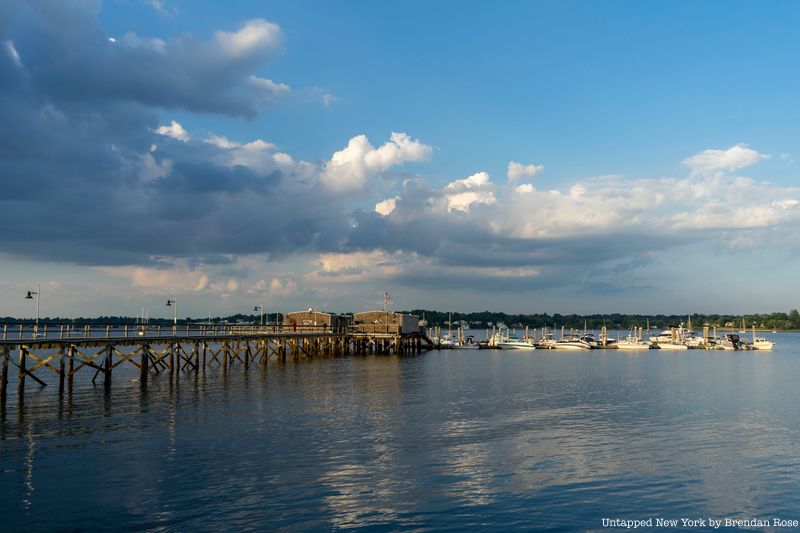
Peter Hains was a U.S. Army Captain whose brother was the novelist Thornton Jenkins Hains. He failed to graduate from the U.S. Naval Academy, but later became an Army captain in 1902. Just six years later, though, Peter Hains gunned down magazine editor and Harper’s contributor William Annis at a yacht club in Bayside, The crime was nicknamed the “Murder at the Regatta.” Peter Hains was convicted of manslaughter and was handed an eight-year sentence. He later received a pardon from the governor, and his brother was acquitted after pleading temporary insanity.
The murder was carried out because Hains feared that his wife had an affair with Annis. At the time, Hains was actually allowed to stay in the military even after a murder, though he resigned from the Army in 1911 following a new Congressional act that would dismiss people from the Army who broke the law. The trial was one of the most talked-about stories of that year across the country, making front-page headlines nationwide. The trial took place at the Flushing County Courthouse.

The Fort Totten Officers’ Club, nicknamed the Castle, is a clubhouse at Fort Totten that now houses the Bayside Historical Society. The two-story Late Gothic Revival building, which was built in the 1870s, includes identical three-story towers with a wood parapet surrounding the structure. The structure was originally the Mess Hall of the U.S. Army Corps of Engineers School of Application. In 1902, the Army moved personnel and materials to Washington Barracks in Washington, D.C. The Army maintained and used the building for various purposes until 1970, after which it was turned into a job corps center for New York City.
The Bayside Historical Society was founded in 1964 to collect, preserve, and disseminate information about Bayside’s history, as well as lead preservation efforts for Bayside’s historic structures. As such, their presence in one of Bayside’s most elaborate historic structures is fitting. The Castle has hosted the society since 1984 and was placed on the National Register of Historic Places in 1986.

The Alley Pond Giant, a tulip tree in Alley Pond Park, is believed to be over 350 years old, which would make it the oldest living organism in the city. According to a sign by the tree, “It was standing tall when General George Washington passed close by in 1790 on a tour of Long Island, and it was most likely a young tree when the Dutch East India Company sent a group of Walloon families to Manhattan in 1624.” The tree has survived through most of New York’s storied history, from the Revolutionary War to the Great Depression to Hurricane Sandy.
Tulip trees can live upwards of 600 years and can tower over the rest of the forest with record heights reaching 150 feet. The Alley Pond Giant now stands at around 133 feet, though, there is a rival tree of the same species found in Clove Lakes, Staten Island, that stands at 119 feet. The tree may have even been around when the Matinecock tribe called the area home.
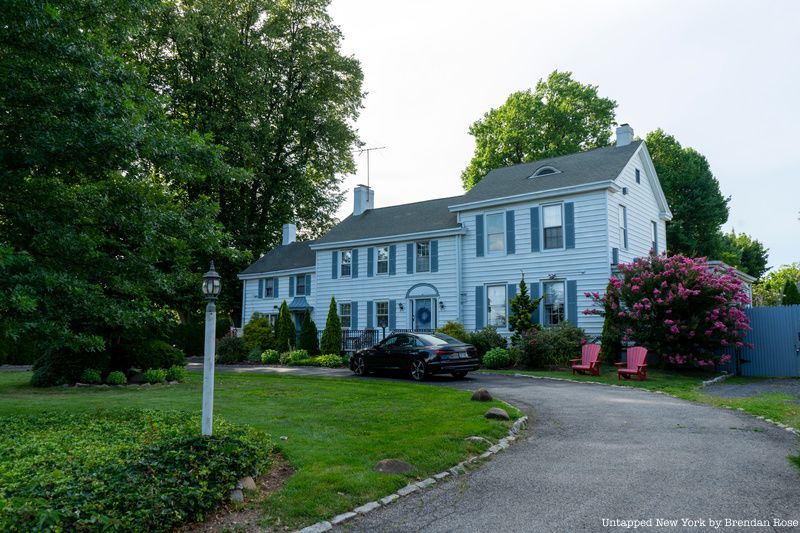
The Cornell-Appleton House is considered by many to be one of the oldest residences in Queens, and certainly the oldest in Bayside. Located at 214-33 33rd Rd., the home may have been built in 1790, though some speculate it could have been constructed later, such as in 1852 according to some estimates. Robert Clifford Cornell is the first namesake of the home, serving as a judge in the Court of Domestic Relations. He was married to Malvina Lamson, the sister of Charlotte Appleton.
Lamson’s other sister Lady Elizabeth Drummond passed away in Paris, and in order to pay her respects, she boarded the RMS Titanic in Southampton with her sisters. All of them survived the disaster and were picked up by the RMS Carpathia. Cornell later passed away in 1918 during the Spanish flu epidemic.
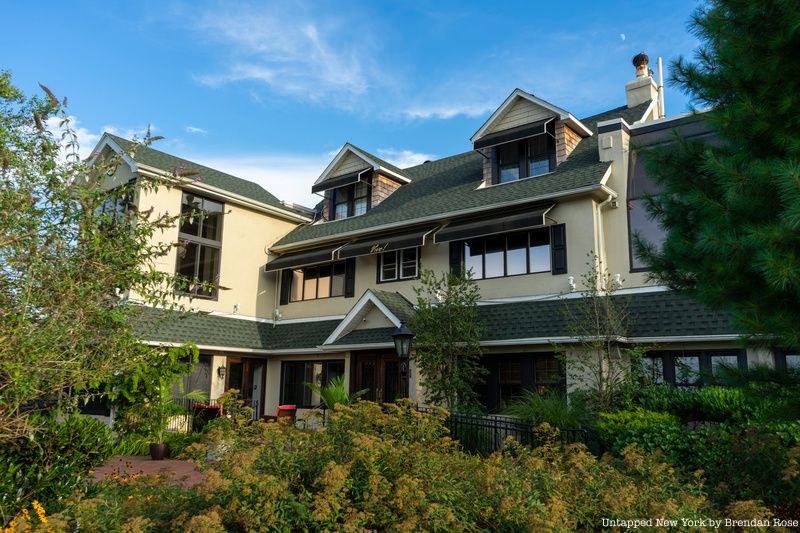
Currently, 201-10 Cross Island Parkway is the home of Vivo, an Italian and Mediterranean restaurant popular among Bayside residents. However, the historic mansion has a storied past. Rudolph Valentino, the “Latin Lover” and Italian actor who starred in silent films including The Four Horsemen of the Apocalpyse, lived at the home. A restaurant called Valentino’s on the Green, a nod to the film star, opened in the space in September 2010.
The mansion also was home to Mayor Fiorello LaGuardia, who was born in Greenwich Village. He also lived at an English Tudor mansion in the Fieldston neighborhood of Riverdale that went on the market in 2018 for $3.5 million. Though little is known about either Valentino’s or LaGuardia’s stays at the historic mansion, much of its original architecture has been preserved to this day, including its stone fireplace in front of which Valentino proposed to his second wife, Natacha Rambova.

Bayside has been the home of many famous movie stars over the years. Gloria Swanson, who appeared in over a dozen silent films as well as in Sunset Boulevard, lived at 216-07 40th Avenue. Actor W.C. Fields also lived in Bayside at 35–25 223rd Street. Charlie Chaplin also called Bayside home, and he lived for a short time at the Beechhurst Towers, which used to be a hotel that attracted the Marx Brothers.
Other famous Bayside residents include actress Norma Talmadge, boxer James Corbett (who names a road in Bayside), actor Richard Dreyfuss, paleontologist Stephen Jay Gould, Rosie O’Donnell, and Christopher Walken. In terms of fictional characters, the family of George Costanza from the TV series Seinfeld is from Bayside, and Jordan Belfort from The Wolf of Wall Street moved to the neighborhood after his firm shut down.
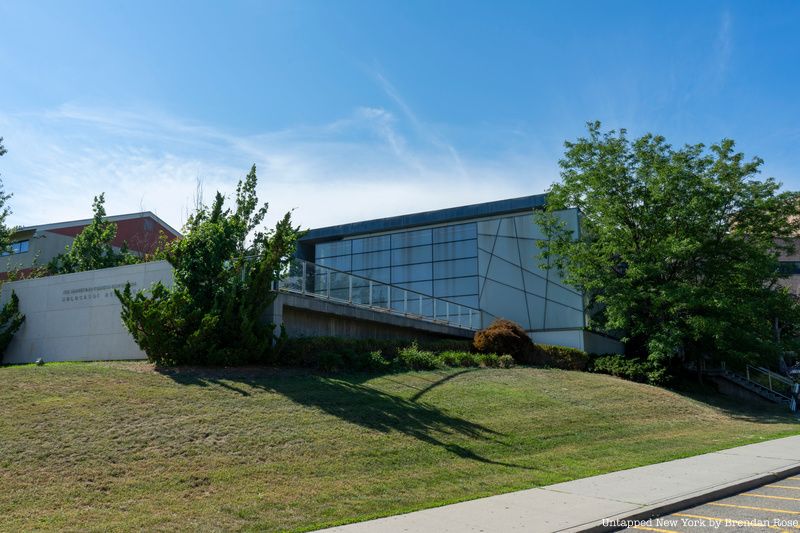
The Harriet & Kenneth Kupferberg Holocaust Center at Queensborough Community College is a “learning laboratory” to educate current and future generations about the Holocaust and the ramifications of prejudice, racism, and stereotyping. Though the center isn’t a museum or library, it has worked with the QCC library and Holocaust survivors under the direction of QCC History Professor and department chair Dr. William Shulman to develop a collection of over 5,000 Holocaust books. The collection also includes oral history recordings of over 300 local survivors, thousands of government records, and hundreds of artifacts from local survivors.
The center’s permanent exhibition recounts the complexities of the Holocaust in Germany, with a mix of local artifacts and archival materials, such as historical audio and film clips, as well as video testimonies spanning from pre-World War II through the end of the war. The front of the building is a three-sided glass box with walls meant to evoke the memory of Kristallnacht, as well as walls of Jerusalem stone that reflect the history of the Jewish people. The center officially launched in 1983 and has since led tours and speaker events for students and the general public.
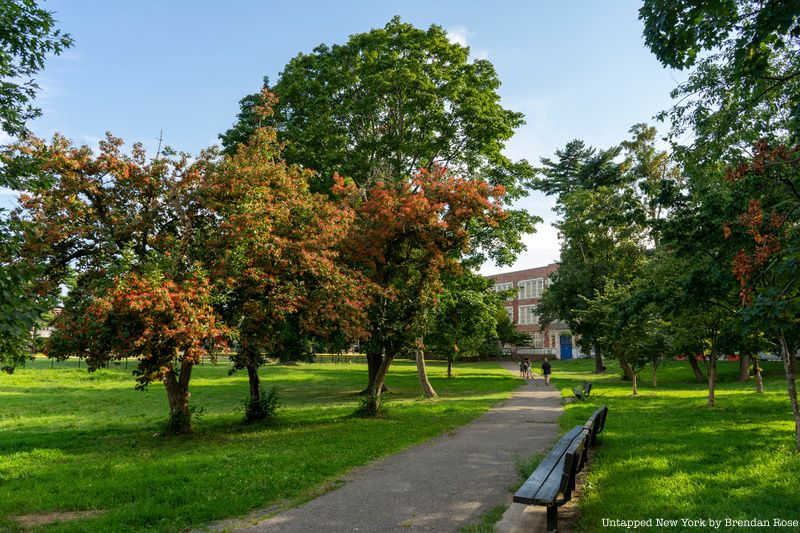
Crocheron Park is a large park in Bayside at 214th Street and 35th Avenue which used to host marathons, New York Philharmonic concerts, and Revolutionary War reenactments. Named for the Crocheron family who was a wealthy family dating back in New York to the late 1600s, the park stands where notable structures owned by the family once stood. Along with Henry Crocheron, a member of Congress, other notable family members include Joseph Crocheron who owned the Crocheron House, which was open for nearly half a century. The hotel resembled an Italian villa and had a notable piazza facing Little Neck Bay. The hotel hosted seafood dinners and gained fame for its clambakes. Regulars at the hotel included none other than Boss Tweed, the notorious leader of Tammany Hall who actually hid at the hotel after his escape in 1875; legend has it that Tweed, who was fleeing a debtor’s prison, boarded a schooner to Cuba right outside the hotel.
Joseph Crocheron was also an experience horse racer, often racing alongside Cornelius Vanderbilt II and August Belmont. The Crocheron mansion nearby actually had a horse track in front that was written about by the New York Times. Corona Plaza stands roughly where the racetrack was once located. Fences across Crocheron Park pay homage to its namesake’s horse racing experience.
Next, check out the Top 10 Secrets of Kew Gardens!
Subscribe to our newsletter